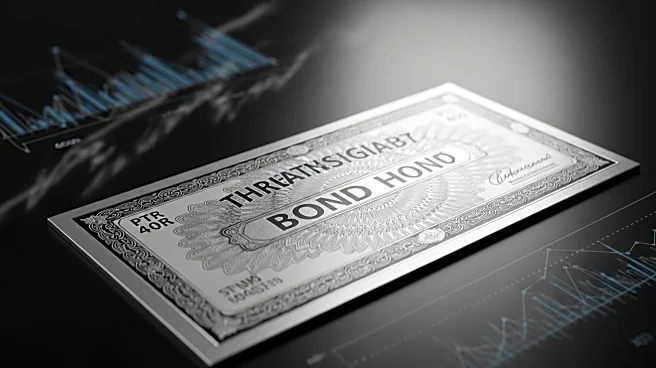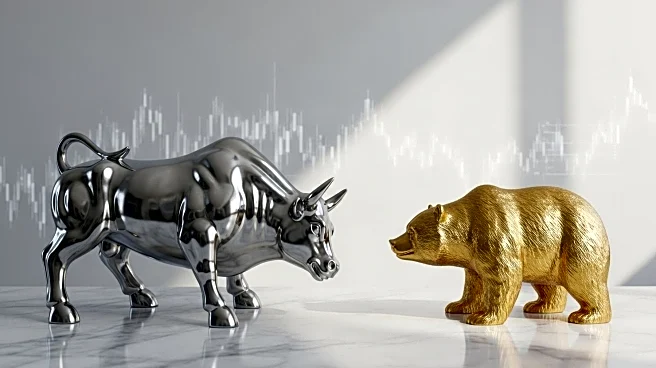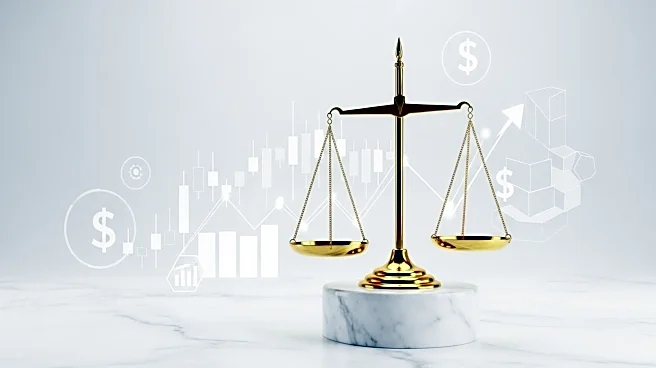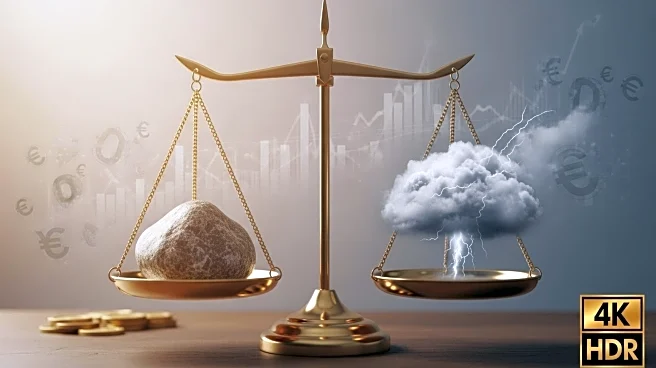What's Happening?
Carter Worth, a market analyst, has observed a notable trend in the U.S. Treasury market, where long-dated bonds are beginning to break higher. This development comes as interest rates continue to decline, prompting a reiteration of the view that U.S. Treasuries should be considered for purchase. The iShares 20+ Year Treasury Bond ETF (TLT) charts are cited as informative in understanding this trend. The analysis suggests that the current market conditions are favorable for long-term bond investments, despite the general caution advised in financial decision-making.
Why It's Important?
The rise in long-dated bonds is significant as it reflects investor sentiment and confidence in the stability of U.S. Treasuries amidst fluctuating interest rates. This trend could impact various stakeholders, including financial advisors, investors, and policymakers, by influencing investment strategies and economic forecasts. As rates slip, the attractiveness of long-term bonds may increase, potentially leading to shifts in portfolio allocations and affecting the broader financial market dynamics. The emphasis on U.S. Treasuries suggests a preference for safer investment options during uncertain economic times.
What's Next?
If the trend of rising long-dated bonds continues, it may prompt further analysis and adjustments in investment strategies by financial advisors and investors. Stakeholders might closely monitor interest rate movements and economic indicators to assess the sustainability of this trend. Additionally, policymakers could consider the implications of bond market dynamics on fiscal policy and economic planning. The ongoing evaluation of market conditions will be crucial in determining future investment decisions and economic strategies.
Beyond the Headlines
The shift towards long-dated bonds may also reflect broader economic concerns, such as potential inflationary pressures or economic slowdown. Investors seeking stability might prioritize U.S. Treasuries as a hedge against market volatility. This trend could influence cultural attitudes towards risk and investment, highlighting a preference for security over high returns in uncertain times.










